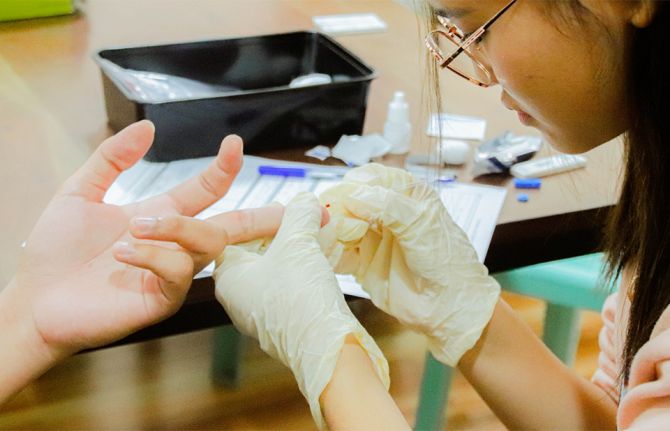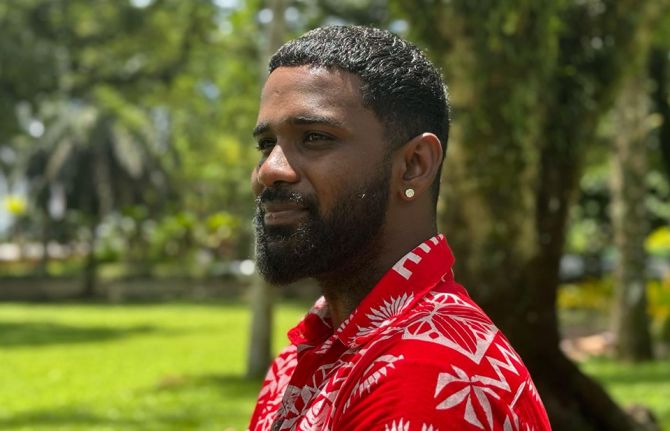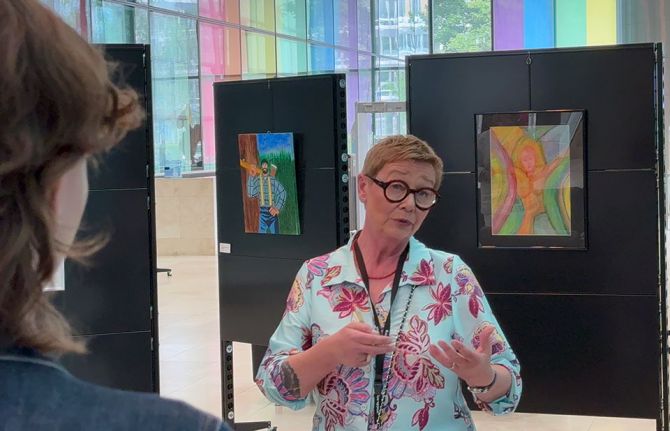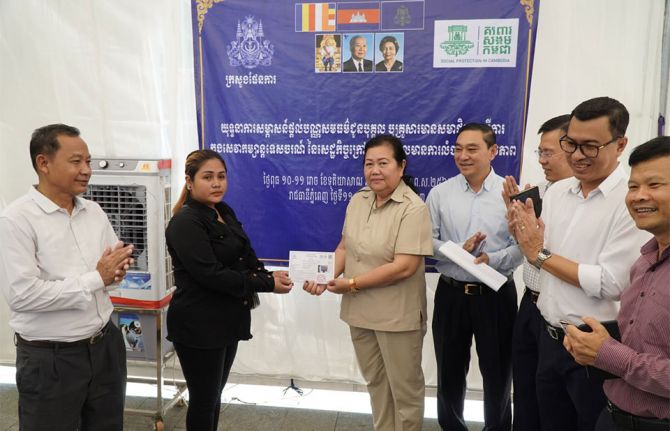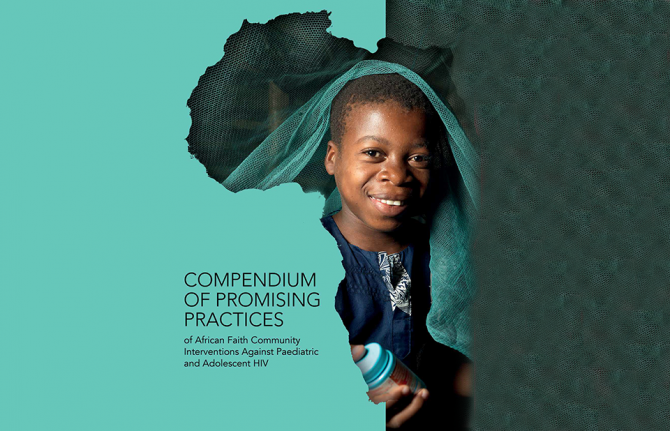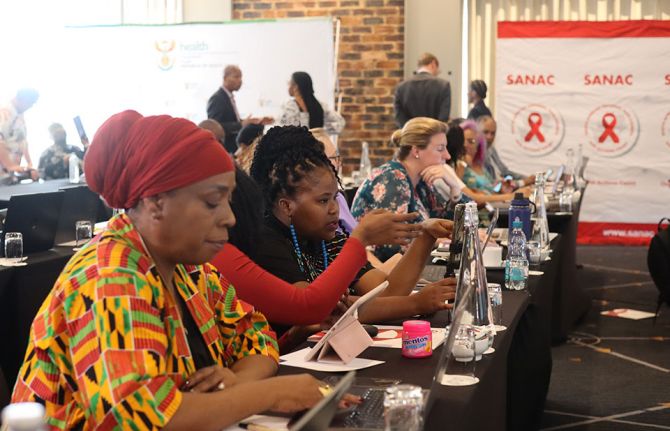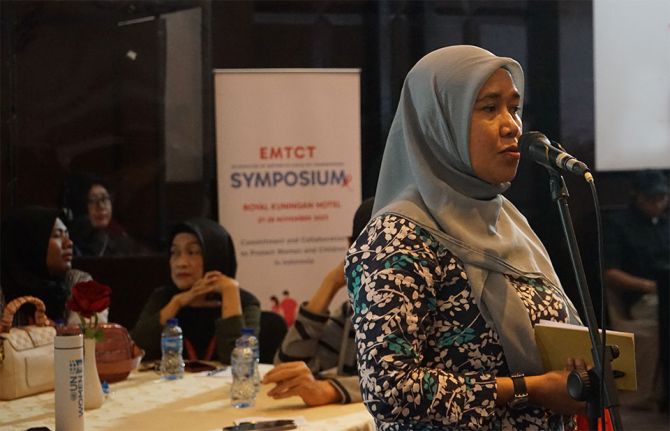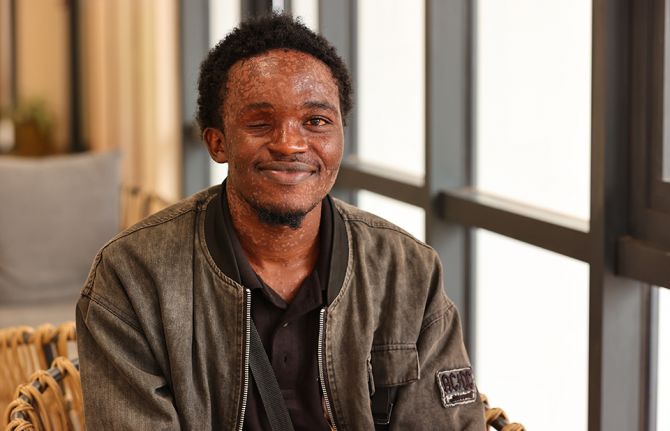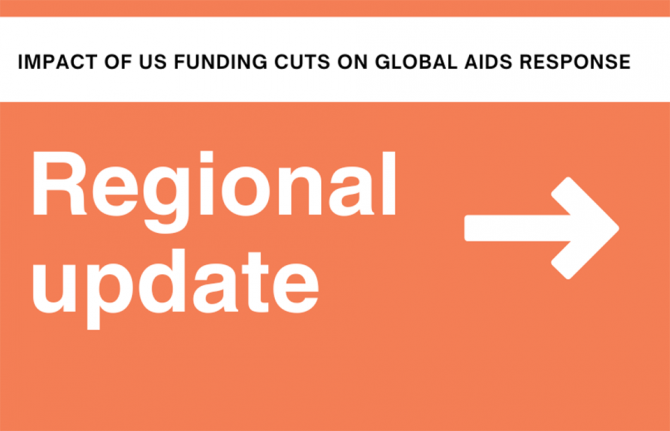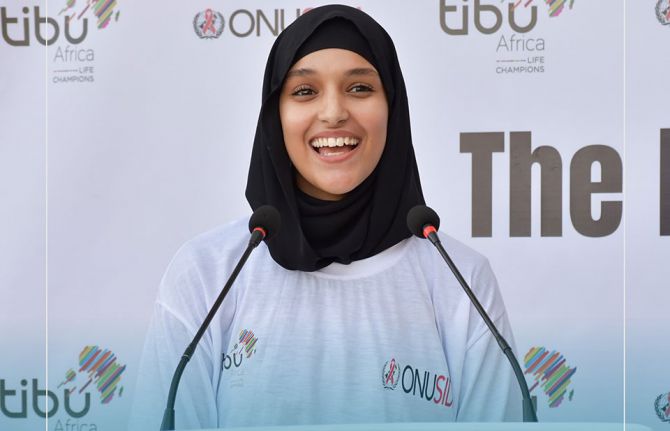
Feature Story
Japan hosts follow-up meeting to discuss outcomes of MDGs Summit 2010
03 June 2011
03 June 2011 03 June 2011
Dr Paul De Lay at the MDGs Follow-up Meeting
Credit: UNAIDS
The Government of Japan, along with the United Nations Development Programme (UNDP), the United Nations Children's Fund (UNICEF), the World Bank and the Japan International Cooperation Agency (JICA), convened a follow-up meeting on 2-3 June 2011 in Tokyo to discuss the outcomes of the UN Millennium Development Goals (MDGs) Summit that took place in September 2010.
With less than five years remaining before 2015, the target year for achieving the MDGs, the meeting brought together high level delegations from more than 100 countries and international organizations, and provided a unique opportunity to exchange knowledge, as well as to discuss more effective measures to strengthen coordination among a broad range of stakeholders.
The meeting was opened by H.E. Prime Minister Kan, who expressed deep appreciation for the solidarity shown by the international community in the wake of the unprecedented earthquakes and tsunami on 11 March 2011. Mr Kan also assured the audience that Japan remains committed to the achievement of MDGs.
Japan remains fully dedicated to carrying out faithfully the international commitments it has expressed in the past to achieving the MDGs
H.E. Mr. Takeaki Matsumoto, Minister of Foreign Affairs of Japan
Mr Takeaki Matsumoto, Japan’s Minister of Foreign Affairs, underlined this commitment saying, “Japan remains fully dedicated to carrying out faithfully the international commitments it has expressed in the past to achieving the MDGs.”
UNAIDS Deputy Executive Director, Programme, Paul De Lay took part in the meeting and also participated in one of the several side events, titled Preparing the health systems for the challenges beyond MDGs.
“UNAIDS has called for taking HIV out of isolation. At the High Level Meeting on AIDS next week, one of the major themes will be “integration”, including exploring synergies between HIV programmes and preventing and caring for non-communicable diseases,” said Dr De Lay.
UNAIDS has called for taking HIV out of isolation. At the High Level Meeting on AIDS next week, one of the major themes will be “integration”, including exploring synergies between HIV programmes and preventing and caring for non-communicable diseases
UNAIDS Deputy Executive Director, Programme, Paul De Lay
The event, moderated by Dr Suwit Wibulpolprasert, Senior Advisor on Disease Control, Ministry of Public Health, Thailand, included presentations from Michel D. Kazatchkine, Executive Director, The Global Fund to Fight AIDS, Tuberculosis and Malaria; Dr Mickey Chopra, Chief, Health Section, Program Division, UNICEF; and Dr Kenji Shibuya, Professor and Chair, Department of Global Health Policy Graduate School of Medicine, The University of Tokyo.
Coming just days before the UN High Level Meeting on AIDS in New York, the meeting enabled participants to exchange their good practices and also learn from others about projects and programmes focused on hard-to-reach regions and groups. Participants also discussed the “way forward” beyond 2015, using lessons learned in the decade under the current MDGs.
During his visit to Japan Dr De Lay also met with Dr Masato Mugitani, Assistant Minister for Global Health, the Ministry of Health, Labour and Welfare and Mr Masaya Fujiwara, Deputy Director-General for Global Issues of the International Cooperation Bureau, the Ministry of Foreign Affairs to discuss Japan’s active participation in the UN High Level Meeting, especially regarding prevention of mother-to-child transmission of HIV. Dr DeLay also met with civil society representatives who will attend the General Assembly event.

Feature Story
Global Partners Forum on children affected by HIV: Time to turn commitments into action
03 June 2011
03 June 2011 03 June 2011A version of this story is also published at www.unicef.org

Charles Aheebwa at home with his two months old sister Kaseo. Mugamba, Uganda.
Credit: UNICEF/Tadej Znidarcic
Global efforts to improve the lives of children affected by HIV are increasing but still fall short of the growing needs of millions. An estimated 16.6 million children have lost one or both parents to AIDS-related illness, the vast majority in sub-Saharan Africa.
This year’s Global Partners Forum on children affected by AIDS brings together 100 high level representatives from governments, civil society, donors, international organizations and academic institutions in an effort to promote evidence-based approaches to improve the lives of children affected by HIV. Under the heading Taking Evidence to Impact, the event, starting 3 June in New York, is jointly hosted by UNICEF, the US President’s Emergency Plan for AIDS Relief (PEPFAR) and UNAIDS.
Keeping mothers and children safe from HIV
Efforts to prevent new HIV infections among children child are critical and can serve as an entry point for care and support for the whole family, particularly through better integration of couples testing and counselling; HIV treatment, care and support; and linkages with HIV testing and treatment within child health services.
“Every mother, father and child should have access to comprehensive health care which includes HIV prevention and treatment,” said Michel Sidibé, Executive Director of UNAIDS who will participate in the forum. “Parents should be given the chance to protect their children from HIV and access life-saving antiretroviral medicine for their own health.”
Enormous challenges
Many children affected by HIV continue to face enormous challenges, including the burden of care for sick relatives, trauma from the loss of parents, economic distress and high health costs. There can also be a heightened risk of early sexual debut and abuse, which can make children—particularly girls—more susceptible to HIV infection.
Every mother, father and child should have access to comprehensive health care which includes HIV prevention and treatment
Michel Sidibé, Executive Director of UNAIDS
“These children have already experienced the tragedy of losing a parent or a loved one to AIDS only to be subjected to stigma, discrimination and exclusion from school and social services,” says Dr Anthony Lake, UNICEF Executive Director, “To help these children reach their full potential, we urgently need to invest in national social protection programmes that fight poverty and stigma, and which address the special needs of HIV-affected families.”
Ambassador Eric Goosby, US Global AIDS Coordinator, agrees that targeted investments are needed to improve the lives of children affected by the epidemic. “The U.S. Government is the largest supporter of programs targeting orphans and vulnerable children, and we remain firm in our commitment. Moving forward, we have a shared responsibility to make smart investments that will ultimately ensure a positive future for children affected by HIV/AIDS.”
The two-day forum will review:
- Lessons learned at country level to support children affected by HIV and their families;
- Mechanisms that protect such children from marginalization and discrimination, and increase their access to key social services;
- The importance of child sensitive social protection and strengthening social welfare systems for increasing access to HIV prevention, treatment and care services;
- Increasing the impact of investments and achieve better results for those in greatest need.
The recommendations from the Global Partners Forum will be reflected in discussions during the UN High Level Meeting on AIDS in New York from 8-10 June 2011.
Global Partners Forum
The Global Partners Forum was first established in 2003 to give momentum to fulfilling global commitments for children affected by AIDS laid out in the United Nations General Assembly 2001 Declaration of Commitments on HIV/AIDS and the Millennium Development Goals.
External links
Multimedia
Multimedia
Related

Feature Story
2 500 young people newly infected with HIV every day, according to Opportunity in Crisis
01 June 2011
01 June 2011 01 June 2011Joint publication by UNICEF, UNAIDS, UNESCO, UNFPA, ILO, WHO and The World Bank presents data on adolescents and HIV for the first time

Credit: UNICEF
Every day, an estimated 2 500 young people are newly infected with HIV, according to a global report on HIV prevention launched today. While HIV prevalence has declined slightly among young people, young women and adolescent girls face a disproportionately high risk of infection due to biological vulnerability, social inequality and exclusion.
For the first time, Opportunity in Crisis: Preventing HIV from early adolescence to young adulthood, presents data on HIV infections among young people and highlights the risks adolescents face as they transition to adulthood. A joint publication by UNICEF, UNAIDS, UNESCO, UNFPA, ILO, WHO and the World Bank, the report identifies factors that elevate their risk of infection as well as opportunities to strengthen prevention services and challenge harmful social practices.
“For many young people HIV infection is the result of neglect, exclusion, and violations that occur with the knowledge of families, communities, social and political leaders. This report urges leaders at all levels to build a chain of prevention to keep adolescents and young people informed, protected and healthy,” said UNICEF Executive Director Anthony Lake. “UNICEF is committed to this cause. We must protect the second decade of life, so that the journey from childhood to adulthood is not derailed by HIV – a journey that is especially fraught for girls and young women.”
According to the report, people aged 15-24 accounted for 41% of new infections among adults over the age of 15 in 2009. Worldwide, an estimated 5 million (4.3 million to 5.9 million) young people in that age group were living with HIV in 2009. Among the 10 to 19 year age group, new data shows, an estimated 2 million adolescents (1.8 million to 2.4 million) are living with HIV. Most of them live in sub-Saharan Africa, most are women, and most do not know their status. Globally young women make up more than 60% of all young people living with HIV. In sub-Saharan Africa that rate jumps to 72%.
If young people are empowered to protect themselves against HIV, they can lead us to an HIV free generation
Michel Sidibé, UNAIDS Executive Director
"Our success with improving access to antiretrovirals means more young people are surviving with HIV, but many are still unaware of their status,” said World Health Organization Director-General, Dr Margaret Chan. “WHO is committed to helping improve adolescents' access to HIV testing and counselling and to making sure that health services address their needs for prevention, treatment, care and support."
Early adolescence is a window of opportunity to intervene, before most youth become sexually active and harmful gender and social norms that elevate the risk of HIV infection are established. Communities, leaders and young people all have a role to play in changing the behaviours that place young people at risk and creating an environment where they may thrive. In southern Africa, for example where HIV infections are high in older age groups, sex with multiple partners and age-disparate relationships are fuelling HIV transmission among young people, particularly young women. But progress can be made. Community-led efforts to change such norms have been effective in communities in Tanzania, where the image of men seeking relations with younger women and girls was effectively turned into an image of ridicule.
"As the report says, too many adolescent girls become pregnant before they are ready, and have children while they are still children themselves," said UNFPA Executive Director, Dr Babatunde Osotimehin. "This puts their own health and their children’s health at risk and limits their opportunities and potential. To achieve the MDGs, it’s absolutely critical to improve access to comprehensive sexuality education and integrated reproductive health services, including family planning and male and female condoms. Evidence shows that sexual and reproductive health information and services do not lead to more frequent sexual relations or high-risk behaviour, but rather to fewer unintended pregnancies, reduced HIV infections and better health."
Certain high-risk behaviours—such as early sexual debut, pregnancy and drug use – are all signs of things going wrong in the environment of the young adolescent, and may be associated with violence, exploitation, abuse and neglect. Yet social protection systems that are HIV-sensitive can contribute to the financial security of vulnerable families, improve access to health and social services and ensure that services are delivered to marginalized youths.
“The world desperately needs new HIV prevention strategies; for every two people who receive life-saving AIDS treatment, another five become newly infected, which is an impossible situation for many poor countries and their communities,” says the World Bank’s Managing Director, Dr Mahmoud Mohieldin. “Existing prevention strategies have had limited success, so we have to look for creative new approaches to reverse the HIV/AIDS epidemic. These must address people’s very basic needs for education, economic security, inclusion, dignity, and human rights. These issues are particularly crucial when we consider the health and well-being of adolescent girls, mothers and children, and socially marginalized groups.”
Family members, teachers, community leaders have a role to play in setting norms for responsible behaviour, and in advocating for the full range of services needed for young people to stay healthy. Indeed, reducing the level of HIV incidence requires not one single intervention, but a continuum of prevention that provides information, support and services throughout the life cycle. Yet many adolescents lack access to basic HIV and prevention information, commodities and testing services.
“Young people need to have access to comprehensive knowledge and services in order to make safe choices about their health and relationships,” said UNESCO Director-General, Irina Bokova. “We are fully committed to this effort, leading the evidence-based push to scale up sexuality education and supporting the different needs of young people as they transition from early adolescence to adulthood. We must work together to ensure that all young people, especially girls and vulnerable populations, receive the education, support and protection necessary for preventing HIV and promoting their overall well-being,” she added.
Worldwide many young people driven by economic duress, exploitation, social exclusion and lack of family support turn to commercial sex and injecting drug use. They face an extremely high risk of infection as well as general stigma and discrimination for engaging in such behaviours. The very same young people most often lack access to HIV prevention and protection services. For national HIV responses to be effective, governments need to address the underlying problems of poverty, exclusion and gender inequality that threaten the health of future generations. Using equity as a guidepost helps to ensure those hardest to reach are not last in line, and that services are available to them and used by them.
“Nearly one of every two new adult HIV infections occurs among 15 to 24 year olds. The ILO Recommendation on HIV and AIDS and the World of Work calls for a special focus on young people in national policies and programmes on HIV and AIDS and highlights the role of education and training systems and youth employment programmes and services as critical channels for mainstreaming information about HIV,” said Juan Somavia, Director-General of the International Labour Organization (ILO). “Already young people often bear a disproportionate share of the burden of unemployment, underemployment and poverty, a situation aggravated by the global recession. We must enable young people to realize their full potential. Their strength is the strength of communities, societies and economies.”
As the report points out, there are opportunities to use proven prevention strategies in all epidemic contexts. In countries with generalized epidemics there are opportunities to encourage healthy attitudes and behaviours, ensure greater gender equality and allow protection to become the new norm. In sub-Saharan Africa, for example, the same social norms that tolerate domestic violence also prevent women from refusing unwanted sexual advances, negotiating safe sex, or criticizing a male partner’s infidelity—all of which threatens the goal of achieving an AIDS-free generation. And in countries with low-level and concentrated epidemics, where HIV infections among youth are driven by injecting drug use, sex work, or male to male sex, there are opportunities to reshape the legal and social milieu that compounds vulnerability and to empower young people with knowledge, prevention services and health care.
“Young people are not only tomorrow’s leaders, they are the leaders of today,” said Michel Sidibé, Executive Director of UNAIDS. “If young people are empowered to protect themselves against HIV, they can lead us to an HIV free generation.”
Contact
Contact
- UNICEF New York
- Roshan Khadivi
- tel. + 1 917 478 2574
- rkhadivi@unicef.org
- World Bank Washington D.C.
- Melanie Mayhew
- tel. + 1 202 4587 891
- Mmayhew1@worldbank.org
- ILO Geneva
- Syed Mohammad Afsar
- tel. +41 22 799 8711
- afsar@ilo.org
- UNAIDS Geneva
- Sophie Barton-Knott
- tel. + 41 22 791 1697
- bartonknotts@unaids.org
- WHO Geneva
- Marie-Agnes HEINE
- tel + 41 22 791 2710
- heinem@who.int
- UNFPA New York
- Omar Gharzeddine
- tel. + 1 212 297 5028
- gharzeddine@unfpa.org
- UNESCO Paris
- Lucia Iglesias
- tel. + 33 1 45 68 17 02
- l.iglesias@unesco.org
Publications

Feature Story
G8 Summit: Mrs Carla Bruni-Sarkozy hosts spouse event on the protection of mothers and children against HIV
27 May 2011
27 May 2011 27 May 2011
(From left) Mrs Ban Soon-taek; Mrs Carla Bruni-Sarkozy; Mr Michel Sidibé; Prof Michel Kazatchkine. Deauville, 27 May 2011.
Credit: Laurent Blevennec
Mrs Carla Bruni-Sarkozy brought together the spouses of Heads of State and Government attending the G8-Africa Summit in Deauville to a working lunch dedicated to the protection of mothers and children against HIV.
As Global Ambassador for the Protection of Mothers and Children Against HIV and founder of the Born HIV-Free campaign, Carla Bruni-Sarkozy engaged the spouses to support the goal of ending new HIV infections among children by 2015. The luncheon included Michel Sibidé, Executive Director of UNAIDS who also represented Anthony Lake, Executive Director of UNICEF in his absence, and Michel Kazatchkine, Executive Director of the Global Fund to Fight AIDS, Tuberculosis, and Malaria. The luncheon was an opportunity to take stock of the initiatives already undertaken in the field and to reaffirm the need for all partners to work together to eliminate new HIV infections among children.
We must mobilize political leaders, the media and the public at large to put an end to this inequity so that by 2015 a new generation can be born HIV free
Mrs Carla Bruni-Sarkozy, Global Ambassador for the Protection of Mothers and Children Against HIV and founder of the Born HIV-Free campaign
Speaking at the luncheon, Carla Bruni-Sarkozy stated, “Every year, almost 400,000 children are born with HIV. Over 90% of them live in sub-Saharan Africa. Yet, today, effective treatment to prevent transmission of HIV from mother to child is available and inexpensive. It is unfair and unacceptable that only pregnant women in the richest countries benefit from appropriate medical care and access to treatment. We must mobilize political leaders, the media and the public at large to put an end to this inequity so that by 2015 a new generation can be born HIV free.”

(From left) Michel Sidibé, Executive Director, UNAIDS; Michel Kazatchkine, Executive Director, Global Fund to Fight, AIDS, Tuberculosis and Malaria. Deauville, 27 May 2011.
Credit: UNAIDS
Calling for the need for increased leadership, UNAIDS Executive Director Michel Sidibé said, “As a father I know that every parent’s wish is to do the best for their children. Mothers must be given access to treatment and have the opportunity to ensure their children are born free from HIV.” Echoing this, Professor Michel Kazatchkine, Executive Director of the Global Fund to Fight AIDS, Tuberculosis, and Malaria said, “With G8 leadership and a strong commitment from developing countries, I know we can improve women’s health and by 2015 have an AIDS free generation.”
These efforts will continue when world leaders meet in New York from June 8-10 at the UN General Assembly High Level Meeting on AIDS to chart the future of the global AIDS response.
Earlier in the day Mr Sidibé addressed a press conference to highlight the joint letter that was submitted to the G8 Heads of State. The letter requests the commitment of the G8 leaders to support the goal of eliminating new HIV infections among children by 2015 and keeping their mothers alive. It was signed by Mr Sidibé, Executive Director, UNAIDS; Anthony Lake, Executive Director, UNICEF; and Michel Kazatchkine, Executive Director, Global Fund to Fight, AIDS, Tuberculosis and Malaria.

(From left): Mme Viviane Wade, Sénégal; Mme Dominique Ouattara, Côte d’Ivoire; Mme Conde Djenè Kaba, Guinée; Mme Ban Soon-taek, United Nations; Mme Carla Bruni-Sarkozy, France; M. Michel Sidibé, UNAIDS; M. Michel Kazathchkine, Global Fund; Mme Aissata Issoufou, Niger; Mme Geertrui Van Rompuy, European Council; Mme Laureen Harper, Canada; Mme Svetlana Medvedeva, Russian Federation; Mme Margarida Barroso, European Commission.
Credit: Laurent Blevennec
External links
External links
Base documents
Base documents

Feature Story
A national campaign aims to increase Namibian men's involvement in HIV health programmes
11 May 2011
11 May 2011 11 May 2011A version of this story was first published at www.unicef.org

Israel Ndeshaanya and Elisabeth Nagula, with their son, Nicolas.
Credit: UNICEF Namibia/2011/Manuel Moreno Gonzalez
Israel Ndeshaanya and Elisabeth Nagula live together with their 8-month old son, Nicolas, in Windhoek’s Katutura township.
Elisabeth is HIV-positive and Israel is very supportive of her, ensuring that she takes her antiretroviral drugs regularly. "Since the day she came to know about her status, I’ve never said any bad words to her...We are just as we have been.”
When Elisabeth became pregnant with Nicolas, the couple went through Namibia’s prevention of mother-to-child transmission of HIV programme. Nicolas was born free of the virus. The programme was started almost a decade ago and has been rolled out to 238 of 335 health facilities across the country, treating some 59 000 pregnant women every year.
Men’s participation
However, in Namibia, men who get involved like Mr Ndeshaanya are relatively rare. As with many other countries, men’s participation in health programmes tends to be lower than that of women.
Recent research conducted by UNICEF and the Namibian government shows that only about 3% of male partners of women in the national antenatal care programme took a HIV test in 2010, compared to 96% of women.
It is not enough for Namibian men to provide the basic necessities such as a house, food, water, electricity for their families. They should also become actively involved in health issues such as the prevention of HIV
President Pohamba
The research also shows that men have a direct bearing on their partner’s adherence to the prevention of mother-to-child transmission intervention, accessed through the antenatal care programme. In some cases they can actively work against the goals of the intervention by delaying access to care or withholding financial assistance.
By contrast, supportive men clearly have a positive effect. According to Ian MacLeod, UNICEF Representative in Namibia, to dramatically reduce new HIV infections among children, men’s participation is of critical importance, “A comprehensive response is needed, combining training of health workers, specialized infant feeding counsellors, community level support to breastfeeding mothers...and, very importantly, mothers need the support of their husbands or partners."
New target
This fact is something that Namibian First Lady Penehupifo Pohamba aims to promote through her new campaign to reduce HIV prevalence, which is supported by President Hifikepunye Pohamba, UNICEF and other organizations.
Launching the campaign, the President emphasized the vital role men play in caring for the well-being of their partners and children.
“It is not enough for Namibian men to provide the basic necessities such as a house, food, water, electricity for their families. They should also become actively involved in health issues such as the prevention of HIV,” he said.
President Hifikepunye Pohamba has set an ambitious target for Namibia to increase participation by men in voluntary HIV counselling and testing from 3% to 25% by the end of 2011.
In Namibia an estimated 13% of the adult population is living with the virus and nearly 20% of all pregnant women are reported to be HIV-positive.
Related

Feature Story
New framework to eliminate transmission of HIV from mothers to their babies
28 March 2011
28 March 2011 28 March 2011
(from left) Helen Jackson, UNAIDS, Senior HIV Prevention Adviser, ESA; Elhadj As Sy, UNICEF Regional Director for Eastern and Southern Africa (ESA); Tigest Ketsela, Director, Family and Reproductive Health, World Health Organization (WHO), Africa Region; Michael Klaus, Regional Chief of Communication, UNICEF ESARO.
The elimination of mother-to-child transmission of HIV in Eastern and Southern Africa has come a step closer with the endorsement of a new regional framework following a three-day consultation in Nairobi, Kenya earlier this month.
The consultation brought together government representatives from 15 high-burden countries[i], civil society organizations and donors. They were joined by the UN Children’s Fund (UNICEF), the Joint United Nations Programme on HIV/AIDS (UNAIDS), the World Health Organization (WHO) and the UN Population Fund (UNFPA).
In 2009 some 370,000 young children were newly infected with HIV. It was noted that although the scale of the problem of mother-to-child transmission of HIV cannot be underestimated, there is much that can be done. According to Elhadj As Sy, UNICEF Regional Director for Eastern and Southern Africa, “We now have the leadership at all levels to bring this number down. We know what works. Now is the time to act and make a difference. An AIDS-free generation by 2015 is possible.”
Championing both new and existing interventions
Partners endorsed the UNAIDS call for the virtual elimination of mother-to-child transmission of HIV by 2015 and adherence to the new WHO guidelines that recommend giving pregnant women and new mothers a combination of three antiretroviral drugs. They also pledged to vigorously pursue all four components of the internationally agreed UN strategy to dramatically reduce mother-to-child transmission.
There was an acknowledgement that a different approach is needed if the elimination target is to be achieved. A series of priority actions—which include enhanced support for existing programmes and strategies to implement new ones—were defined:
- Improving coverage access and use of services
- Strengthening the quality of existing interventions
- Integrating efforts to prevent mother-to-child transmission into routine antenatal and reproductive health services
- Making paediatric HIV care a routine part of child health services
- Promoting health systems development
- Improving measurement of programme performance and impact assessment
- Engaging communities more fully
The partners also agreed to work on ensuring that all pregnant women and their partners are counselled and tested during their first antenatal care visit.
Room for optimism
If countries continue rapid scale up of quality, comprehensive PMTCT service access, the goal of elimination of HIV transmission from mother to infants by 2015 can be achieved
Helen Jackson, Senior HIV Prevention Advisor for UNAIDS in Eastern and Southern Africa
Although many pregnant women are still falling through the treatment coverage net, in recent years scaled up prevention of vertical transmission efforts have been effective. According to UNAIDS 2010 estimates, in southern Africa in 2009 an estimated 130,000 infants were newly infected, more than 30% fewer than in 2004. In Botswana, Namibia, South Africa and Swaziland treatment coverage has reached more than 80%[ii]. Given these figures, and the possibility that they can be achieved across the region, participants in the consultation expressed optimism.
“If countries continue rapid scale up of quality, comprehensive PMTCT service access, the goal of elimination of HIV transmission from mother to infants by 2015 can be achieved,” said Helen Jackson, Senior HIV Prevention Advisor for UNAIDS in Eastern and Southern Africa. “We have joined forces to make sure this happens.”
[i] South Africa, Mozambique, Uganda, United Republic of Tanzania, Kenya, Zambia, Malawi, Zimbabwe, Ethiopia, Angola, Burundi, Lesotho, Botswana, Rwanda, Swaziland and Namibia.
[ii] Ibid
Related

Feature Story
Cricket star Sangakkara tells Sri Lankan young people to be aware, open and informed about HIV
16 March 2011
16 March 2011 16 March 2011
Sri Lanka captain Kumar Sangakkara (second from left) joins the youth drama group during their play on the impact of stigma and discrimination for those living with HIV.
Sri Lankan cricket captain Kumar Sangakkara took time off the pitch during the Cricket World Cup tournament to speak to hundreds of young people about the importance of being informed and responsible about HIV. The event was part of the International Cricket Council (ICC), UNAIDS and UNICEF’s Think Wise campaign for the ICC Cricket World Cup 2011.
“You need to educate yourself and become more aware of the world around you and HIV. Be unafraid and unashamed to speak openly about these subjects with your friends, family and your teachers in school,” said Mr Sangakkara, during the event which was held at his old school, Trinity College, in the city of Kandy.
As part of the event, a youth drama group staged a play to demonstrate the impact of stigma and discrimination for people living with HIV. The drama reinforced the need for more education and life skills to prevent the spread of HIV, particularly among adolescents.
You need to educate yourself and become more aware of the world around you and HIV. Be unafraid and unashamed to speak openly about these subjects with your friends, family and your teachers in school.
Captain of the Sri Lankan cricket team and Think Wise champion Kumar Sangakkara
"To use theatre and cricket together was a great idea. No one expected Kumar to be a part of the play and when he came on with us, people really listened. Everything we were saying was reinforced by his presence and in his own words," said Kapila Rasnayaka, one of the young people involved in the drama group.
Kumar Sangakkara, along with other leading international cricketers including Graeme Smith (South Africa) and Virender Sehwag (India), is a ‘Champion’ spokesperson for the joint Think Wise partnership. In Kandy he was joined by Sri Lanka team mates Ajantha Mendis and Upul Tharanga who also showed their support for HIV prevention efforts in the country.
“If we are going to ‘get to zero’ on HIV, we need the active engagement of young people—the leaders of tomorrow’s response—now,” said UNAIDS Country Coordinator for Sri Lanka, David Bridger. “Sangakkara’s involvement in the campaign has helped push the boundaries, inciting discussion and a buzz around HIV that we will build on with the hope that young people will take the HIV response into their hands,” he said.
More than 7 000 people worldwide are newly infected with HIV each day—one out of three is a young person between 15 and 24 years-old. The Think Wise campaign encourages young people to be informed, take appropriate action to prevent HIV infection and stand together against the stigma and discrimination often facing people living with HIV.
External links

Feature Story
Hitting HIV for six: Star cricketers unite with people living with HIV in India
10 March 2011
10 March 2011 10 March 2011
Captain of the South African cricket team and Think Wise champion Graeme Smith and a young participant take a catch at the training session organized with people living with HIV.
Sonu Kumar grips the cricket ball in his hand, takes his run up and bowls a fast ball. Reacting quickly, his opponent angles his bat and smashes the ball out of the ground for six.
But this is no ordinary cricket match. Sonu is a 14 year-old living with HIV, knocking around balls with cricketing great Graeme Smith and his colleagues from the South African team. The occasion, a special HIV awareness-raising practice session organized as part of the International Cricket Council, UNAIDS and UNICEF Think Wise campaign during the 2011 Cricket World Cup.
The Think Wise campaign encourages young people to learn how to prevent HIV infection and stand up against stigma and discrimination. At the Feroz Shah Kotla Stadium in Delhi, Graeme Smith—South African Captain and official ambassador for the Think Wise campaign— and teammates took time out of their match schedules to promote the campaign messages.
“We play sport and love cricket, like so many others in this country. By training together the cricketers are showing their support for people living with HIV and help break down discrimination we often face,” said Sonu.
In the presence of supporters and media, a group of ten young people joined the elite cricketers, mixing training with talking about HIV. They participated in drills on the field with Richard Pybus, coach of the South African cricket team. Later the young people discussed their experience living with HIV with the team, asking questions about the role of cricketers in addressing issues of HIV related stigma.
The key for us is to educate people during the tournament—to help prevent HIV and to show that people living with HIV lead normal lives. I believe this will contribute in reducing stigma.
Graeme Smith, captain of the South African cricket team and Think Wise champion.
“HIV is a very real disease and has affected people all around the world including in our country and here in India,” said Mr Smith during the practice session. “The key for us is to educate people during the tournament—to help prevent HIV and to show that people living with HIV lead normal lives. I believe this will contribute in reducing stigma,” he said.
Underlining the broad reach of cricket in India and across the world, UNAIDS Country Coordinator Charles Gilks said, “Cricket has a huge following in India and cricket stars can be very powerful agents for change. We are particularly pleased to link up with Think Wise champions as we aim for the UNAIDS’ hat-trick of zero new infections, zero discrimination and zero AIDS-related deaths.”
Hospital gets Sehwag treatment
In another Think Wise activity taking place in India, Think wise champion and India’s opening batsman Virender Sehwag called on cricket fans across the world to stop discrimination against people living with HIV.
Mr Sehwag made his plea after visiting the Haji Sir Ismail Sait Ghosha hospital in Bengaluru where he met people whose lives have been affected by HIV.
“People living with HIV are no different from anybody else. There needs to be more awareness of what it means to be living with HIV,” said Mr Sehwag. “As cricketers, particularly in a country like India, we are in a position to help influence attitudes and behaviour and by being involved in the Think Wise campaign hopefully I can play my part,” he said.

Feature Story
Bangladesh gives the 2011 Cricket World Cup an HIV awareness spin
03 March 2011
03 March 2011 03 March 2011
Participants of the ‘Mini Cricket World Cup’ schools tournament are presented with awards in Bangladesh
As the overs are bowled, the wickets fall and the crowds go crazy in the 2011 Cricket World Cup, host-country Bangladesh is giving the tournament an HIV spin. Through the Think Wise campaign the tournament is raising awareness among young people on HIV prevention and reducing stigma.
The Think Wise campaign, led by the International Cricket Council (ICC) in partnership with UNAIDS and UNICEF, harnesses the power of cricket to prevent HIV. Together with co- host countries—India and Sri Lanka—Bangladesh is organizing a number of “Think Wise” activities throughout the World Cup tournament that runs from 19 February – 2 April.
One such activity was the Schools Programme event where the World Cup was used as a platform to promote the sport, as well as to share information on HIV. Sixty of the country’s schools participated in the orientation which included the lively presence of “Stumpy the elephant”, the official mascot of the ICC event.
“I really appreciate this initiative! We don’t get to know this information about HIV usually and my perception about AIDS has changed,” said one of the young participants. A selection of the schools then took part in a ‘mini world cup’ cricket tournament, where HIV messages were shared with players and supporters through video, information and education materials in English and Bangla. “I’m now educated about HIV by coming here! It’s a great initiative for young people,” said one of the young men visiting the special UNAIDS booth.
Through the Think Wise campaign we have established important relationships with the Bangladesh Cricket Board, business partners, the media and we have sparked the interest and passion of young people
Salil Panakadan, UNAIDS Country Coordinator for Bangladesh
The Bangladesh campaign received a high-profile boost from an announcement of the country’s team captain Sakib Al Hasan. “As Think Wise Champion, I’m happy to use my current popularity to raise awareness on AIDS,” said Mr Hasan at a press conference announcing his role. “We [cricketers] want to leave behind a legacy of social awareness of AIDS so young people will get to know more about HIV.”
“The involvement of cricketing heroes helps raise the profile among young people—and all cricketing fans,” said UNAIDS Country Coordinator for Bangladesh, Salil Panakadan. “Through the Think Wise campaign we have established important relationships with the Bangladesh Cricket Board, business partners, the media and we have sparked the interest and passion of young people. This gives us a tremendous opportunity to build on even after the last tournament over is bowled,” Dr Panakadan added.
A host of additional activities will take place in Bangladesh, India and Sri Lanka as the tournament continues including site visits and interaction between star players and key affected communities. Cricket teams will wear red ribbons on their shirts in key matches and HIV prevention messages will be promoted at venues on all match days.

Feature Story
UNICEF: Lack of attention to needs of young people has damaging social, economic, political and health consequences for all
28 February 2011
28 February 2011 28 February 2011
Credit: UNICEF
Investing now in the world’s 1.2 billion adolescents aged 10 to 19[i] can break entrenched cycles of poverty and inequity, says UNICEF in its flagship 2011 State of the World’s Children report, called ‘Adolescence: An Age of Opportunity’.
The publication, launched on 25 February, argues that although greater investment over the last two decades has lead to enormous gains for younger children, as shown by the 33% drop in the global under-five mortality rate[ii], fewer gains have been made among older adolescents who are at a critical crossroads in their lives. Many have benefited from higher child survival rates, primary school attendance and access to safe water but all these gains are at risk if investment in their future does not continue as they grow up.
“Adolescence is a pivot point – an opportunity to consolidate the gains we have made in early childhood or risk seeing those gains wiped out,” said Anthony Lake, UNICEF’s Executive Director. “We need to focus more attention now on reaching adolescents, particularly adolescent girls, investing in education, health and other measures to engage them in the process of improving their own lives.”
Insufficient attention to the general needs of young people carries with it social, economic, political and health consequences. Governments, international policy makers and civil society must meaningfully invest in adolescents to benefit society as a whole, the report argues.
We need to focus more attention now on reaching adolescents, particularly adolescent girls, investing in education, health and other measures to engage them in the process of improving their own lives
Anthony Lake, UNICEF Executive Director
Education provides a telling example; more than seventy million young people of lower secondary age are currently out of school[iii]. Nearly 40% of adolescents in sub-Saharan Africa are in this position[iv]. On a global level girls still lag behind boys in secondary school attendance. Without education, adolescents are more likely to be poor and marginalized. They also find it more difficult to develop the knowledge and skills they need to navigate the risks of exploitation, abuse and violence which, the report says, are highest during the second decade of life. When adolescents are reached successfully, they can be at the forefront of changes that benefit themselves and society as a whole.
Other challenges facing adolescents are many and varied. On the economic front, in 2009 81 million of the world’s young people were unemployed[v] and the current global financial crisis is having a devastating effect. Around a third of young girls in the developing world (excluding China) marry before the age of 18 and in a few countries nearly 30% of girls under 15 have husbands[vi]. This can lead to a negative cycle of premature child-bearing and high rates of maternal mortality.
To enable adolescents and children to deal effectively with myriad obstacles, specific investments are needed, the report contends. These include:
- Mainstreaming child welfare
- Investing in education and training
- Promoting laws, policies and programmes that protect the rights of adolescents and protect them from violence, exploitation and abuse
- Enabling adolescents to overcome barriers to essential services, such as quality health care, and stepping up the challenge to poverty and inequity.
If these investments are made a new generation of young adults will emerge and lead healthier and more productive lives.
UNICEF dedicates 'The State of the World's Children 2011' to adolescents. Watch the video below:
[i] United Nations, Department of Economic and Social Affairs, Population Division, World Population Prospects: The 2008 revision,
[ii] Achieving the MDGs with equity, no. 9, UNICEF, New York, 2010; and Statistical Tables 1–10, pp. 88–129.
[iii] United Nations Educational, Scientific and Cultural Organization Institute of Statistics, Out-of-School Adolescents, UIS, Montreal, 2010, p. 10.
[iv] United Nations Educational, Scientific and Cultural Organization, Education for All Global Monitoring Report 2010: Reaching the marginalized, UNESCO, Paris, 2010, p. 74.
[v] International Labour Office, Global Employment Trends for Youth August 2010: Special issue on the impact of the global economic crisis on youth, International Labour Organization, Geneva, 2010, pp. 3–6.
[vi] United Nations Children’s Fund, Progress for Children: A report card on child protection, no. 8, UNICEF, New York, 2009, pp. 46–47; and Statistical Table 9, p. 120.
Related
 “Who will protect our young people?”
“Who will protect our young people?”

02 June 2025


